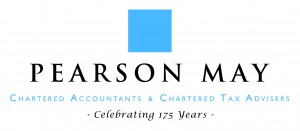Whatever your reasons are for donating to charity, an added bonus can be the tax breaks that are available, says Pearson May partner Jacqui Bowden.
Gift Aid
Donating through Gift Aid means that charities can claim an extra 25p for every £1 you donate. Any donation you make under Gift Aid is deemed to hae been made net of basic rate tax of 20% recognising that you have already paid Income Tax on the cash donation that you are making. For example, if you made a donation of £80 then the charity would be able to reclaim an additional £20 from HM Revenue & Customs (HMRC). 
One of the requirements of donating under Gift Aid is however that you have paid sufficient tax in the tax year to cover the tax that the charity reclaims from HMRC otherwise it is your responsibility to pay over the difference to HMRC. If for example your income is covered by your personal tax allowance then you may not be paying any tax.
If you make charitable donations under Gift Aid then in the above example you will also have to pay the £20 over to HMRC. The changes to the taxation of investment income and dividends introduced in 2016/17 may mean that more people fall into this category as dividend tax credits, for example, will no longer be available to cover the basic rate tax withheld. If you fall into the above category then charitable donations can of course still be made, but they should not be made under Gift Aid.
Gift Aid donations can be “carried back” and treated it as if they had been paid in the previous tax year. This can be a useful planning tool if, for example, you will only be a basic rate taxpayer in 2016/17, but had tipped over into the higher rate tax bracket in the year ended 5 April 2016. However, the donation must be made before the tax return is submitted and you must make the appropriate entry on your tax return.
Higher rate taxpayers (or additional rate taxpayers) can reclaim an additional 20% (25% for additional rate taxpayers) from HMRC by Gift Aiding any donations to charities and notifying HMRC accordingly. Consideration should also be given before 5 April to making Gift Aid donations as these may be sufficient to bring these taxpayers back into a lower tax bracket or to avoid the withdrawal of personal allowances for those with taxable income in excess of £100,000, thereby potentially saving tax at 60%.
General Exemption from Inheritance Tax (IHT)
Donations to charities during an individual’s lifetime (which generally includes most museums, universities and community amateur sports clubs) are exempt from IHT.
Any amounts left to charities in your will are deducted from the value of your estate on death before IHT is calculated.
Reduced rate of IHT
If at least 10% of the ‘net’ value of an individual’s estate is left to one or more charities, the rate of IHT payable on the estate is 36% rather than 40%. In broad terms, the ‘net’ value of your estate is the value of your assets on death, after deducting any liabilities, IHT reliefs and exemptions and the nil-rate band.
Depending on the estate’s ‘net’ value, the IHT reduction could be substantial. 
It is possible to vary a will within two years of the death to ensure that at least 10% of the estate is bequeathed to charity.
The above is for general guidance only and no action should be taken without obtaining specific advice.


















